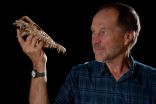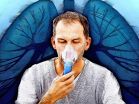(Press-News.org) Analysis of circulating tumor cells (CTCs) in a mouse model of pancreatic cancer identified distinct patterns of gene expression in several groups of CTCs, including significant differences from the primary tumor that may contribute to the ability to generate metastases. In their study reported in the Sept. 25 issue of Cell Reports, investigators from the Massachusetts General Hospital (MGH) Cancer Center identified several different classes of pancreatic CTCs and found unexpected factors that may prove to be targets for improved treatment of the deadly tumor.
"Our ability to combine a novel microfluidic CTC isolation device, developed here at MGH, with single-cell RNA sequencing has given us new biological insights into these cells and revealed novel avenues to try and block the spread of cancer," says lead author David T. Ting, MD, MGH Cancer Center.
Pancreatic cancer is among the most deadly of tumors because it spreads rapidly via CTCs carried in the bloodstream. The earliest technologies for isolating CTCs from blood samples relied on interactions with known tumor-specific marker proteins, potentially missing cells that did not express those particular markers. The device used in the current study, called the CTC-iChip, enables the isolation of all CTCs in a blood sample, regardless of the proteins they express on their surface, by removing all other components. Since the CTCs collected are in solution, unlike with previous CTC capture devices, they are suitable for advanced RNA sequencing techniques to reveal the gene expression patterns of each individual cell.
Using a well-known mouse model of pancreatic cancer, the researchers first isolated 168 single CTCs from the bloodstreams of five individual mice. Analysis of the RNA transcripts of each CTC revealed several different subsets of CTCs, based on gene expression patterns that were different from each other and from the primary tumor. The largest subset, which the authors call 'classic CTCs,' was found to have elevated expression of a stem cell gene called Aldh1 a2, along with genes characteristic of two basic cell types – epithelial and mesenchymal – transition between which has been associated with tumor metastasis. Another gene expressed by almost all classic CTCs, Igfbp5, is only expressed in primary tumor at locations where epithelial cancer cells interface with the supporting stromal cells that provide a nurturing microenvironment, an observation that suggests that those regions may be the source of CTCs.
The research team was most surprised to observe that extracellular matrix (ECM) genes in general – usually expressed primarily in stromal cells – were highly expressed in all classic CTCs. Previous studies have suggested that the establishment of metastases depends on the appropriate cellular microenvironment – 'soil' in which CTCs can plant themselves as 'seeds'– and that the expression of ECM genes is an important aspect of that environment. Expression of ECM genes by CTCs themselves suggests that the blood-borne cells may provide or help prepare their own 'soil.'
Analysis of CTCs from blood samples of human patients with pancreatic, breast or prostate cancer also found elevated expression of several ECM genes. One particular gene, SPARC, was highly expressed in all pancreatic CTCs as well as in 31 percent of breast CTCs. Further experiments revealed that suppressing SPARC expression in human pancreatic cancer cells reduced their ability to migrate and invade tissue, and significantly fewer metastases were generated when SPARC-suppressed pancreatic tumors were implanted into a mouse model, supporting the protein's role in a tumor's metastatic potential.
"Given our limited therapeutic options for pancreatic cancer, understanding the role of the ECM in this tumor seems to be of great importance," says Ting, who is an assistant professor of Medicine at Harvard Medical School. "Much effort has been focused on targeting the microenvironment to improve the efficacy of chemotherapy, and data indicating that environmental stromal cells can enhance a tumor's metastatic ability indicate that ECM proteins are important whether they are produced in stroma or within the tumor cells themselves. Now we need to investigate whether therapeutically targeting ECM can destroy both the tumor microenvironment and CTCs before they have a chance to metastasize."
INFORMATION:
Shyamala Maheswaran, PhD, and Daniel Haber, MD PhD, MGH Cancer Center, are co-senior authors of the Cell Reports paper. Additional co-authors include Mehmet Toner, PhD – director of the BioMicroElectroMechanical Systems Resource Center in the MGH Center for Engineering in Medicine, who led the development of the CTC-iChip – and Ben Wittner, PhD, Sridhar Ramaswamy, MD, and Toshi Shioda, MD PhD, MGH Cancer Center.
In 2011 the MGH entered a collaborative agreement with Janssen Diagnostics to establish a center of excellence in CTC research. Development of RNA in situ hybridization biomarkers was done with sponsored research support from Affymetrix, Inc. Additional support for the current study includes a "Dream Team" grant from Stand Up to Cancer and grants from the Howard Hughes Medical Institute, Burroughs Wellcome Fund, National Institute of Biomedical Imaging and Bioengineering grant 5R01EB008047, and National Cancer Institute grant 2R01CA129933.
Massachusetts General Hospital, founded in 1811, is the original and largest teaching hospital of Harvard Medical School. The MGH conducts the largest hospital-based research program in the United States, with an annual research budget of more than $785 million and major research centers in AIDS, cardiovascular research, cancer, computational and integrative biology, cutaneous biology, human genetics, medical imaging, neurodegenerative disorders, regenerative medicine, reproductive biology, systems biology, transplantation biology and photomedicine.
Massachusetts General study reveals gene expression patterns in pancreatic CTCs
Increased expression of extracellular matrix genes could be a novel therapeutic target
2014-09-22
ELSE PRESS RELEASES FROM THIS DATE:
Infant solar system shows signs of windy weather
2014-09-22
Astronomers using the Atacama Large Millimeter/submillimeter Array (ALMA) have observed what may be the first-ever signs of windy weather around a T Tauri star, an infant analog of our own Sun. This may help explain why some T Tauri stars have disks that glow weirdly in infrared light while others shine in a more expected fashion.
T Tauri stars are the infant versions of stars like our Sun. They are relatively normal, medium-size stars that are surrounded by the raw materials to build both rocky and gaseous planets. Though nearly invisible in optical light, these disks ...
Old drug may be key to new antibiotics
2014-09-22
Hamilton, ON (September 22, 2014) – McMaster scientists have found that an anticonvulsant drug may help in developing a new class of antibiotics.
Although dozens of antibiotics target what bacteria do, their study has looked at how a certain part of bacteria are created, and they found there is a way of stopping it.
The discovery is important as there is growing concern worldwide about how antibiotic resistance is making the cures for infections ineffective. The World Health Organization has declared that antibiotic resistance is a major threat to global health security. ...
Answer to restoring lost island biodiversity found in fossils
2014-09-22
GAINESVILLE, Fla. --- Many native species have vanished from tropical islands because of human impact, but University of Florida scientists have discovered how fossils can be used to restore lost biodiversity.
The key lies in organic materials found in fossil bones, which contain evidence for how ancient ecosystems functioned, according to a new study available online and in the September issue of the Journal of Herpetology. Pre-human island ecosystems provide vital clues for saving endangered island species and re-establishing native species, said lead author Alex Hastings, ...
Higher risk of heart disease for South Asians in Canada
2014-09-22
Hamilton, ON (September 22, 2014) – South Asians living in Canada have a higher rate of heart disease and double the rate of diabetes compared with while people, McMaster researchers have found.
The paper was published today in the Canadian Medical Association Journal (CMAJ Open) and may be found at http://www.cmajopen.ca/content/2/3/E183.full
One of the fastest-growing ethnic groups in the country is the more than one million South Asian people living in Canada, comprising about three percent of the population. They include people from India, Pakistan, Sri Lanka, ...
Snail shells show high-rise plateau is much lower than it used to be
2014-09-22
The Tibetan Plateau in south-central Asia, because of its size, elevation and impact on climate, is one of the world's greatest geological oddities.
At about 960,000 square miles it covers slightly more land area than Alaska, Texas and California combined, and its elevation is on the same scale as Mount Rainier in the Cascade Range of Washington state. Because it rises so high into the atmosphere, it helps bring monsoons over India and other nations to the south while the plateau itself remains generally arid.
For decades, geologists have debated when and how the plateau ...
Cheater, cheater: UGA study shows what happens when employees feel excluded at work
2014-09-22
Athens, Ga. – When employees feel left out, they act out.
That's the message that new research from the University of Georgia Terry College of Business delivers as it explains why employees can become weasels to benefit their work group.
"Everybody has a need for social approval. It's the basis of our human functioning," said Marie Mitchell, co-author of the research and professor of management at UGA. "But when individuals are faced with a risk of social exclusion, it motivates some pretty unsavory behaviors. We already know how people react when they're definitely ...
Reversing the effects of pulmonary fibrosis
2014-09-22
New Haven, Conn. – Yale University researchers are studying a potential new treatment that reverses the effects of pulmonary fibrosis, a respiratory disease in which scars develop in the lungs and severely hamper breathing.
The treatment uses a microRNA mimic, miR-29, which is delivered to lung tissue intravenously. In mouse models, miR-29 not only blocked pulmonary fibrosis, it reversed fibrosis after several days.
The findings were published Sept. 19 in the journal EMBO Molecular Medicine.
"The mimic, when injected into the blood, goes to the lung and it has a ...
Experts provide much-needed policy analysis for clinical integration of next generation sequencing
2014-09-22
HOUSTON – (Sept. 22, 2014) – As genetic sequencing technologies continue to evolve rapidly, becoming part of clinical care, there is a critical need to establish appropriate policies and regulatory frameworks to address potential challenges, legal and ethical experts have said. A special policy issue of the Journal of Law, Medicine & Ethics published online today and edited by experts with the Center for Medical Ethics and Health Policy at Baylor College of Medicine gives policy makers the tools to jumpstart this process.
Experts with the Center for Medical Ethics and ...
Can tapioca replace corn as the main source for starch sweeteners?
2014-09-22
New Rochelle, NY, September 22, 2014—Cassava, also known as tapioca, has large starch-filled roots and can grow at high yields in areas of Africa, Asia, and Latin America where corn and sugarcane are not commonly grown. With the availability of novel enzymes and processes designed to break down tapioca starch into sugars that can then be used to produce sweeteners such as glucose, fructose, or maltose syrup, tapioca may be an ideal alternative to corn, as described in a Review article in Industrial Biotechnology, a peer-reviewed journal from Mary Ann Liebert, Inc., publishers. ...
Kessler pilot study demonstrates benefits of wellness program for people with MS
2014-09-22
West Orange, NJ. September 22, 2014. Kessler researchers have published a pilot study showing the benefits of a 10-week psychoeducational wellness program in people with multiple sclerosis (MS). Improvements were seen in mood, overall mental health, perceived stress, and pain. "Development and effectiveness of a psychoeducational wellness group for individuals living with MS: Description and outcomes" was epublished ahead of print on September 3 in the International Journal of MS Care (doi: 10.7224/1537-2073.2013-045). The authors are Kimberly Beckwith McGuire, PhD, of ...
LAST 30 PRESS RELEASES:
Home fingertip oxygen monitors less accurate for people with darker skin tones
Six weeks in a cast no less effective than surgery for unstable ankle fractures
Precautionary approach to alcohol-free and low alcohol drinks needed to protect public health, say experts
Gas-atomized Ca–Mg alloy powders produce hydrogen simply by adding water — high-efficiency hydrogen generation at room temperature
British redcoat’s lost memoir reveals harsh realities of life as a disabled veteran
World-leading rare earth magnet recycling facility launches in UK
Corday Selden selected for the Oceanography Society Early Career Award
MIT chemists determine the structure of the fuzzy coat that surrounds Tau proteins
Same moves, different terrain: How bacteria navigate complex environments without changing their playbook
Severe weather is deadly for vulnerable older adults long after the storm ends, study finds
Expert panel highlights opportunities for improving cancer studies
Hearing aid prescriptions not associated with changes in memory and thinking
Seth Zippel selected for The Oceanography Society Early Career Award
Jeremy Horowitz selected for The Oceanography Society Early Career Award
Kennesaw State University’s Jerry Mack named Paul “Bear” Bryant Newcomer Coach of the Year
Ancient teeth are treasure troves of data on Iron Age lifestyles
Avocados may become easier to grow in India—but not if global emissions remain high
Pregnant women with IBD show heightened inflammation in vaginal mucosa
Underwater photos show seabirds, seals and fish interacting with a tidal turbine in Washington State
1 in 5 surveyed UK adults who have experienced the death of a pet report it as more distressing than experienced human deaths, with significant rates of prolonged grief disorder symptoms also being re
Polyester microfibers in soil negatively impact the development of cherry tomato plants in experiments, raising concerns over the potential effect of high levels of such contaminants
LGBTQ+ adults may be around twice as likely to be unemployed or to report workforce non-participation compared to heterosexual adults, per large representative Australian survey
Horses can smell fear: In experiments where horses smelled sweat from scared humans, they reacted to scary and sudden events with increased fear and reduced human interaction
New synaptic formation in adolescence challenges conventional views of brain development
Scientists identify target to treat devastating brain disease
Oliver Zielinski selected as Fellow of The Oceanography Society
Has progress stalled on gender equality at work?
Quantum simulator sheds light on how nature moves energy in systems like photosynthesis and solar conversion
Can a hashtag help prevent atrocities? Study shows social media can be a powerful tool
The American Ornithological Society (AOS) announces the winner of the 2025 Wesley Lanyon Award
[Press-News.org] Massachusetts General study reveals gene expression patterns in pancreatic CTCsIncreased expression of extracellular matrix genes could be a novel therapeutic target





